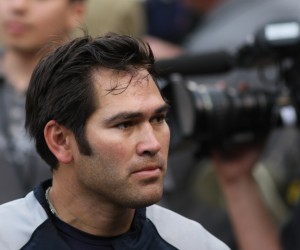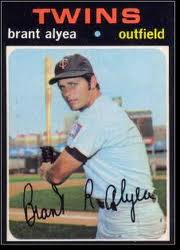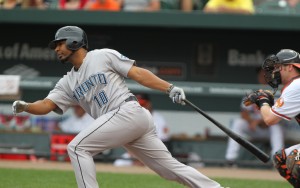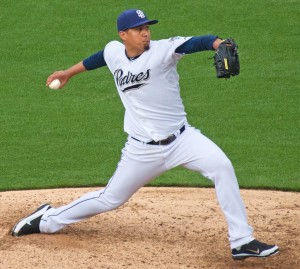Ryan Doumit, on July 22, became the third Minnesota Twin to homer from both sides of the plate in one game – following in the footsteps of Roy Smalley (1986) and Chili Davis (1992). He also became the fourth switch hitter to go deep from both sides of the plate this season (Mark Teixeira, Nick Swisher, Yasmani Grandal). Doumit’s offensive accomplishment underscores the value the off-season pickup (signed to a two-year, $7 million extension recently) brings to the Twins. He’s currently hitting .290 (third on the team), with ten homers (fourth on the Twins) and 46 RBI (second) and has played catcher, first base, outfield and designated hitter. (A key factor here is Doumit’s ability to provide valuable “breathers” for Twins stars Joe Mauer and Justin Morneau.)
Doumit’s display of power from both sides of the plate prompted BBRT to take a look at the record book (when it comes to going yard from the both batter’s boxes in the same contest). Turns out it’s not as rare as you might think.
– It’s been accomplished 271 times (162 in the American League, 109 in the National League).

Mark Teixeira has homered from both sides of the plate in a record 13 games – contributing to a Yankee tradition.
– Mark Teixeira holds the record for most times homering from both sides of the plate in the same game at 13, as well as the American League record of 11. (He accomplished the feat eight times with the Yankees and three times with the Rangers in theALand twice with the NL Braves.) Ken Caminiti holds the National League record at 10 – 7 times with the Padres, three with the Astros.
– The Yankees hold the MLB franchise record (and, of course, the AL record) for most times having a player homer from both sides of the plate in a game with 49 (30%) of the AL’s 162 occurrences. The list of Yankees who have accomplished the feat is long and impressive: Mickey Mantle; Tom Tresh; Roy White; Roy Smalley, Jr.; Bernie Williams; Ruben Sierra; Jorge Posada; Tony Clark; Melky Cabrera; Nick Swisher; and Mark Teixeira.
– Surprisingly, the NL franchise record holder is not an old, established franchise like the Yankees, but the much younger New York Mets – with 20 of the NL’s 109 occurrences. The roster of Mets who have homered from both side of the plate in the same contest includes: Lee Mazilli; Howard Johnson; Bobby Bonilla; Todd Hundley; Carl Everett; Tony Clark; Jose Reyes; and Carlos Beltran.
– A final tidbit, no pair of hitters has had more ambidextrous home run games while teammates than Mark Teixeira and Nick Swisher who, as Yankees since 2009, have accomplished the feat a combined 11 times (eight for Teixeira and three for Swisher.) Swisher by the way trails only Teixeira on the MLB total list – with 11 right-/left-handed homer games. Also at 11 you’ll find Chili Davis and Eddie Murray
























